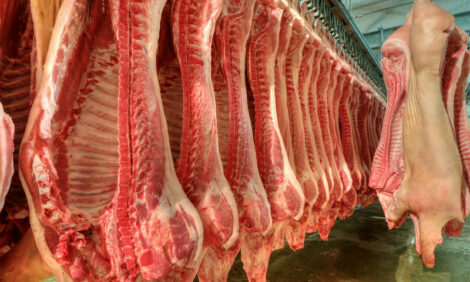



Pig Health, a Sow’s Legacy – Part 1
CANADA - This report is the first of a series on the latest insights into four maternally derived factors that impact pig health: mitochondria, fetal programming, the microbiome and factors transferred in colostrum/milk. The better we understand these, the better we can support them, writes Dr Joe Rogowsky, Director of Health and Biosecurity.Evidence is mounting that shorting mitochondria on nutrients could well be the root cause for many of the farrowing room sow and piglet health challenges we see, as well as flare ups of endemic opportunist bacterial infections, internal and external, in growing pigs.
Mitochondria are microscopic organelles inside all body cells except red blood cells that are inherited from the mother only and are best known as the power supply of the cell. They convert nutrients into the fuel used by cells, but also regulate cell health, growth, differentiation, aging, the immune response and are a key driver for oogenesis, fertilization, embryo development, implantation and lactation in pigs.
The fact that many viruses such as circo, flu, parvo, PED, PRRS, TGE and others target mitochondria to disrupt cell health attests to their importance.
We knew mitochondria had their own DNA but only recently recognized that they are most likely a bacteria that developed a symbiotic relationship with eukaryotic cells over 1 billion years ago.
Like bacteria, mitochondria can respond to their environment by changes in size, numbers and activity, and are sensitive to antibiotics.
Mitochondria in mice became dysfunctional when exposed to clinically relevant levels of antibiotics such as quinolones (e.g. enrofloxacin), aminoglycosides (e.g. gentamycin, neomycin), and ß lactams (e.g. penicillins, ceftiofur), and in humans and mice, by tetracyclines. However, bovine mitochondria were unaffected by tiamulin and macrolides.
In humans, there are 100 times more mitochondria than body cells, so “a strong platform for adverse effects.”
In the process of converting nutrients to fuel, toxic by-products are produced called oxidants. These are neutralized by antioxidants, but when the production of oxidants exceeds the antioxidant capacity, the result is a physiologic state called oxidative stress (OS).
OS is apparently common in sows during late gestation and lactation, in growing pigs any time mitochondrial nutrient supply falls short of demand, and, possibly, when medicated with certain antibiotics for extended periods.
In sows, OS has been reported to cause anestrus, spontaneous abortions, intrauterine growth restriction, preterm labour and low birth weights, lower postpartum appetite and immunity and dysgalactia.
In growing pigs, this has been reported to result in opportunist bacterial infections. Having seen a response to antioxidant supplementation in lactating sows and growing pigs, I’m convinced that OS is a factor in pig health and that closing that gap will get us closer to realizing the genetic potential of the Genesus pig.
Knowledge is power as they say and now that we better understand mitochondria, we have the opportunity to better support them by considering their nutrient needs (see 22 for an excellent review), the judicious use of antibiotics and supplement with antioxidants as needed.









